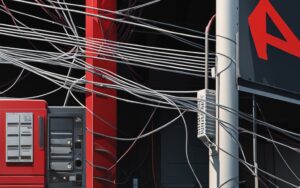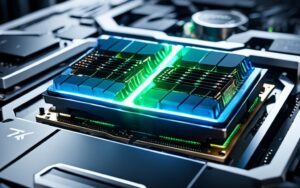Table of Contents
Welcome to our comprehensive guide on building a powerful video editing rig! If you’re in the market for a high-performance video editing machine, but don’t want to break the bank on pre-built workstations, building a custom PC might be the perfect solution. By carefully selecting the right components, you can create a professional video editing computer tailored to your needs and budget.
In this guide, we will walk you through the key considerations and components required to build a video editing workstation that can handle even the most demanding editing tasks. From choosing the right CPU to maximizing performance with sufficient RAM, we’ll cover it all.
Come join us on this journey to create a powerful video editing rig that will boost your editing workflow and deliver exceptional results. Let’s get started!
Powerful Video Editing Rig: Choosing the Right CPU for Video Editing
When it comes to building a powerful video editing rig, one of the most important components to consider is the CPU, or central processing unit. The CPU acts as the brain of your computer, handling all the calculations and processing necessary to run video editing software smoothly. When choosing a CPU, there are several factors to take into account, including brand, processor cores, and multi-threading capabilities.
Two popular CPU brands in the market are Intel and AMD. Intel CPUs are commonly found in pre-built machines, while AMD CPUs often offer more processing power at a lower price, making them popular choices for custom builds. Both brands have their own advantages, so it’s important to research and compare their offerings to find the best fit for your video editing needs.
In video editing, having multiple processor cores is essential for handling the demands of editing software like Adobe Premiere and Final Cut Pro. The more cores a CPU has, the more efficiently it can handle multiple tasks simultaneously. This is especially important when working with high-resolution video files and complex effects. Look for CPUs with at least 6 or more cores to get the best performance for video editing tasks.
“Multi-threaded CPUs, such as those from the AMD Ryzen series, allow for more efficient processing and complex video editing tasks.”
In addition to the number of cores, the concept of multi-threading is also important to consider. Multi-threading allows a CPU to work on multiple tasks within a single core simultaneously. This can greatly improve processing efficiency, especially when it comes to multitasking and running resource-intensive software like video editing programs. CPUs from the AMD Ryzen series are known for their multi-threading capabilities, making them a popular choice among video editors.
Summary:
- Choose a CPU brand that fits your budget and performance needs. Consider both Intel and AMD options.
- Look for CPUs with multiple processor cores to handle the demands of video editing software.
- Consider multi-threaded CPUs for more efficient processing and complex video editing tasks.
| CPU Brand | Advantages | Considerations |
|---|---|---|
| Intel | Widely available and often found in pre-built machines. | Can be more expensive compared to AMD options. |
| AMD | Offers more processing power at a lower price point. | May not be as readily available in pre-built machines. |
Powerful Video Editing Rig: Selecting the Right Motherboard for Compatibility
When building a powerful video editing rig, it’s crucial to choose a motherboard that is compatible with your selected components. The motherboard acts as the spine of your system, connecting all the different parts together. To ensure smooth functionality and optimal performance, it’s important to consider CPU compatibility, RAM compatibility, storage compatibility, as well as the motherboard’s chipset and socket.
Firstly, you need to select a motherboard that is compatible with your chosen CPU. Intel motherboards are designed for Intel CPUs, while AMD motherboards are designed for AMD CPUs. The socket type on the motherboard must match the CPU socket type to ensure proper installation and functionality. For example, an Intel Core i9-10900K requires an LGA1200 socket motherboard, while an AMD Ryzen 9 5950X requires an AM4 socket motherboard.
RAM compatibility is another crucial factor to consider. The motherboard must support the type, speed, and capacity of RAM you plan to use. Check the motherboard’s specifications to ensure it can accommodate your desired RAM configuration.
Additionally, it’s important to ensure that the motherboard has the necessary connections for your storage devices. Check for the presence of SATA ports or M.2 slots, depending on the type of storage you plan to use. This will ensure that you can easily connect and utilize your chosen storage devices without any compatibility issues.
| Component | Compatible Motherboard |
|---|---|
| CPU | Intel CPU – Intel motherboard (with matching socket) AMD CPU – AMD motherboard (with matching socket) |
| RAM | Check motherboard specifications for supported RAM types, speeds, and capacities |
| Storage | Check for presence of SATA ports or M.2 slots for desired storage devices |
Selecting the right motherboard ensures that all your components work together seamlessly, maximizing the performance of your video editing rig. Take the time to research and choose a motherboard that meets your specific requirements and provides the necessary compatibility for your chosen CPU, RAM, and storage devices.
Powerful Video Editing Rig: Maximizing Performance with Sufficient RAM
RAM, or random-access memory, plays a crucial role in video editing projects. It provides temporary storage for open projects, allowing your computer to handle high-density files and run editing software smoothly. Investing in sufficient RAM can significantly improve editing performance and enhance your overall workflow.
For professional video editing, it is recommended to have a minimum of 16GB of RAM. This capacity allows for smooth multitasking and efficient handling of large files. However, if your budget allows, consider upgrading to 32GB or even more for optimal performance, especially when working with complex video editing software and high-resolution footage.
A sufficient amount of RAM ensures that your computer can handle the demands of editing software, reducing the risk of lagging or crashing during the editing process. It allows you to work with multiple high-resolution video clips, apply real-time effects, and render videos efficiently. With ample RAM, you can experience seamless editing without frustrating delays.
| RAM Capacity | Benefit |
|---|---|
| 16GB | Smooth multitasking and handling of large files |
| 32GB | Optimal performance with complex editing software and high-resolution footage |
Remember, the more RAM your computer has, the more data it can hold in its temporary storage. This enables faster access and processing of video files, resulting in a more efficient and productive video editing experience. So, when building your powerful video editing rig, make sure to allocate a significant portion of your budget to RAM for maximum performance.
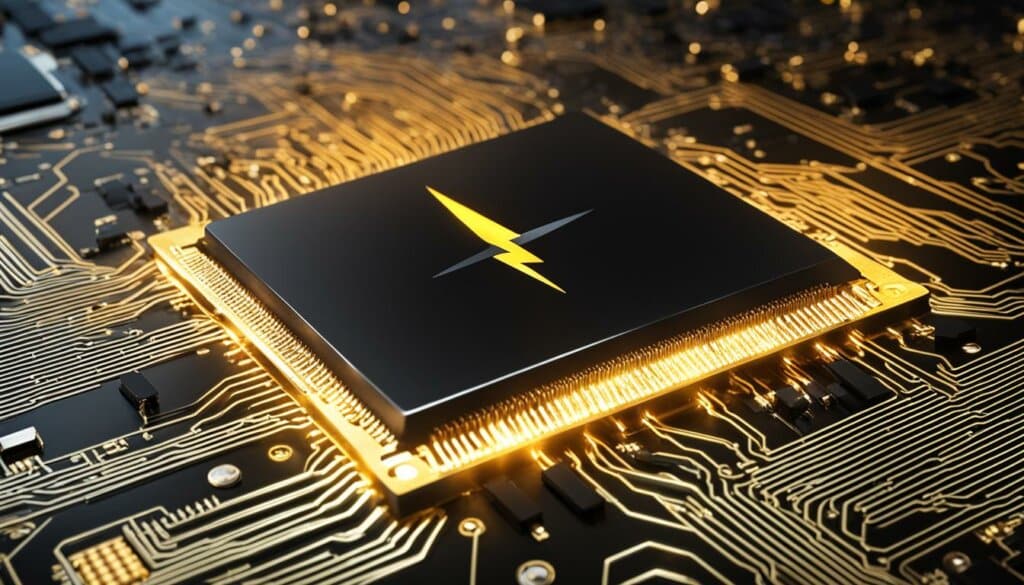
In conclusion, investing in sufficient RAM is essential for maximizing the performance of your video editing rig. It allows for smooth multitasking, efficient handling of high-density files, and seamless editing with complex software. With the right amount of RAM, you can unleash your creativity and produce professional-quality videos with ease.
Storage Considerations for Video Editing
When it comes to video editing, storage plays a crucial role in ensuring smooth workflow and efficient handling of large video files. There are two main types of storage options to consider: hard disk drives (HDDs) and solid-state drives (SSDs).
HDDs are the traditional option, offering high capacity at a lower price compared to SSDs. They are suitable for storing large video files and are commonly used for archival purposes. However, HDDs are slower in terms of read and write speeds, which can result in longer rendering times and slower file transfers.
On the other hand, SSDs are significantly faster and more reliable due to their lack of moving parts. They offer faster boot times, quicker file transfers, and smoother overall performance. SSDs are ideal for storing working files and projects that require frequent access. While they may have a higher price tag compared to HDDs, the performance benefits make them worth considering for video editing.
Comparing HDDs and SSDs for Video Editing
Here is a comparison table highlighting the key differences between HDDs and SSDs for video editing:
| Storage Type | Advantages | Disadvantages |
|---|---|---|
| HDD | High capacity, cost-effective | Slower read/write speeds, more prone to failure |
| SSD | Faster performance, reliable | Higher cost per gigabyte, lower capacity |
When building a video editing rig, it’s common to combine both HDDs and SSDs for optimal performance and storage capacity. You can use an SSD as your primary drive for storing active projects and software, while using an HDD for long-term storage and backup. This setup allows you to take advantage of the speed and efficiency of SSDs while still having ample storage space.
Ultimately, the storage solution you choose for your video editing rig will depend on your specific needs, budget, and workflow requirements. Consider the size of your video files, the frequency of access, and the importance of speed and reliability. By selecting the right storage options, you can enhance your video editing experience and ensure that your files are safely stored and easily accessible.
Choosing the Right Graphics Card for Video Editing
When it comes to video editing, the graphics card, or GPU, plays a crucial role in enhancing performance, particularly in rendering and effects processing. While the CPU is generally more important for most video editing tasks, advanced effects and graphics require a GPU with sufficient video RAM (VRAM).
For smooth video editing, it is recommended to invest in a GPU with at least 8GB of VRAM, especially when working with 4K video. The VRAM allows for faster rendering and processing of complex visual elements. With a powerful GPU, you can achieve smoother timeline scrubbing, faster preview rendering, and improved real-time playback.
When choosing a graphics card, consider your specific editing needs and budget. If you primarily work with basic video editing tasks, a mid-range GPU will suffice. However, for professional-level editing or handling high-resolution footage, investing in a high-end GPU with ample VRAM will provide the best performance.
“The right graphics card can significantly enhance your video editing workflow, allowing you to work with greater efficiency and achieve better results.”
Comparison of Graphics Cards for Video Editing
| Graphics Card | VRAM | Price | Recommended for |
|---|---|---|---|
| Nvidia GeForce RTX 2080 Ti | 11GB | High | Professional-level editing, 4K video |
| AMD Radeon RX 5700 XT | 8GB | Mid | High-resolution editing, gaming |
| Nvidia GeForce GTX 1660 Ti | 6GB | Low | Basic video editing, budget-friendly |
Table: Comparison of graphics cards for video editing, showcasing the VRAM, price range, and recommended usage.
Remember that while the GPU is important, it works in conjunction with the CPU and other components. It’s essential to ensure that your chosen graphics card is compatible with your CPU and motherboard. Additionally, consider factors such as power supply requirements, cooling solutions, and physical dimensions when selecting a graphics card for your video editing rig.
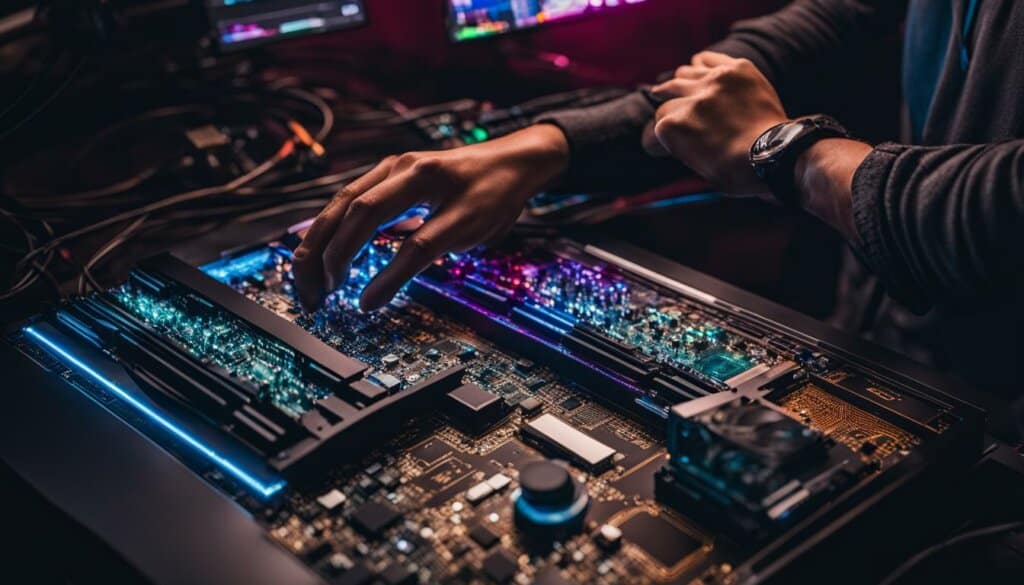
Ensuring Reliable Power with a Quality Power Supply
The power supply unit (PSU) is a critical component of your video editing rig, providing reliable and stable power to all the other components. Choosing the right power supply is essential to ensure the smooth operation of your system and protect your valuable hardware. Here are some key factors to consider when selecting a power supply for your video editing PC:
Efficiency Rating
Look for a power supply with a high efficiency rating, such as 80+ or higher. The efficiency rating indicates the percentage of input power that is converted into usable output power, with a higher rating indicating better energy efficiency. An efficient power supply not only saves energy but also generates less heat, resulting in quieter operation and prolonging the lifespan of your components.
Modular Power Supply
A modular power supply allows you to connect only the cables you need, reducing cable clutter inside your PC case. This not only improves airflow and cooling but also makes installation and maintenance easier. With a modular power supply, you can achieve a cleaner and more organized build, enhancing the overall aesthetics of your video editing rig.
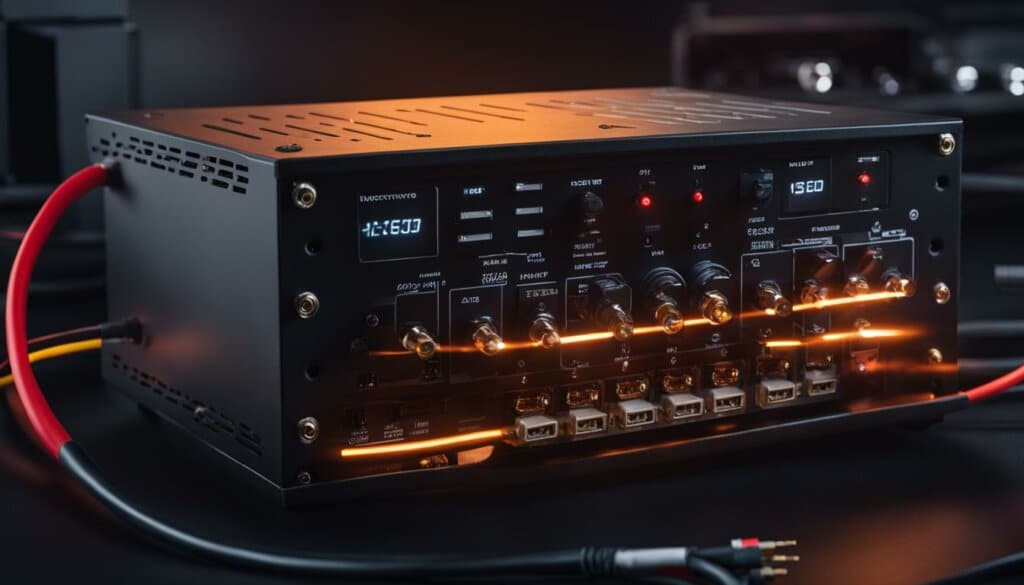
Energy Efficiency
Energy efficiency is particularly important if you use your video editing rig for long hours or leave it running overnight. An energy-efficient power supply can significantly reduce your electricity costs over time. Look for power supplies that meet industry standards for energy efficiency, such as 80+ Bronze, Silver, Gold, Platinum, or Titanium certifications.
By investing in a quality power supply that matches the power requirements of your components, you can ensure reliable and stable power delivery to your video editing rig. A well-chosen power supply will not only protect your hardware but also contribute to the overall performance and longevity of your system.
Powerful Video Editing Rig: Keeping Your CPU Cool with Effective Cooling Solutions
Effective cooling solutions are crucial for maintaining optimal performance and preventing overheating in your video editing rig. When it comes to keeping your CPU cool, there are several options to consider, including CPU coolers, fans, and all-in-one (AIO) water coolers.
A CPU cooler is a device that helps dissipate heat generated by your CPU. It typically consists of a heatsink, which absorbs the heat, and a fan, which blows cool air over the heatsink. CPU coolers come in various forms, including air coolers and liquid coolers. Air coolers use a combination of heatsinks and fans, while liquid coolers utilize a pump and radiator to circulate coolant.
Fans are another popular cooling solution for CPUs. These fans draw cool air into the computer case and expel hot air, helping to maintain low temperatures. They are affordable, easy to install, and come in different sizes and configurations to suit your specific needs.
“Effective cooling solutions are crucial for maintaining optimal performance and preventing overheating in your video editing rig.”
If you’re looking for more advanced cooling, an AIO water cooler may be the solution for you. AIO water coolers provide better heat dissipation and can handle higher temperatures than traditional air coolers. They consist of a pump, radiator, and fan, which work together to cool your CPU efficiently. While AIO water coolers require more installation and maintenance than air coolers, they can offer superior cooling performance.
Regardless of the cooling solution you choose, it’s important to monitor your CPU temperatures regularly. High temperatures can lead to performance issues and potential hardware damage. Use temperature monitoring software to keep an eye on your CPU’s temperature and adjust your cooling setup if necessary.
| Cooling Solution | Pros | Cons |
|---|---|---|
| CPU Coolers | – Effective cooling performance – Various options available – Affordable |
– Bulkier compared to fans – More installation steps – Potential RAM clearance issues |
| Fans | – Easy to install – Affordable – Wide range of options |
– Less effective for high heat loads – Louder than other cooling solutions |
| AIO Water Coolers | – Superior cooling performance – Low noise level – Sleek aesthetic |
– More complex installation – Higher cost compared to air coolers – Regular maintenance required |
When choosing your cooling solution, consider your budget, the size of your computer case, and the cooling requirements of your CPU. It’s important to strike a balance between cooling performance, noise level, and aesthetics to ensure the optimal functioning of your video editing rig.
Powerful Video Editing Rig: Protecting Your Components with the Right Computer Case
When building a powerful video editing rig, choosing the right computer case is essential for protecting your valuable components. The computer case serves as the external housing for your rig, providing ventilation and safeguarding against potential damage. Consider the following factors when selecting a computer case:
- Ventilation: Look for a case with adequate cooling options, such as multiple fan mounts or support for liquid cooling. Proper ventilation helps dissipate heat, keeping your components at optimal operating temperatures.
- Protection: Ensure that the computer case offers protection against liquid spills and dust. Dust filters and sealed panels can prevent dust from accumulating inside your rig, minimizing the risk of overheating and component failure.
- Compatibility: Check the compatibility of the computer case with your chosen components, particularly the motherboard size and form factor. Make sure there is enough space to accommodate your graphics card, CPU cooler, and storage devices.
“The right computer case not only provides protection and ventilation for your components but also adds to the overall aesthetics of your video editing rig.”
Table: Comparison of Popular Computer Cases
| Computer Case | Ventilation | Protection | Compatibility |
|---|---|---|---|
| Corsair Crystal 570X | Three included front fans and ample ventilation options | Tempered glass panels and dust filters | Supports ATX and microATX motherboards |
| NZXT H710i | Four included fans and support for liquid cooling | Smart device with integrated fan control and dust filters | Supports ATX, microATX, and mini-ITX motherboards |
| Fractal Design Meshify C | Front mesh panel and support for multiple fans | Dust filters and sound-dampening materials | Supports ATX and microATX motherboards |
Table data is for illustrative purposes only and may not represent the latest product specifications.
The right computer case not only provides protection and ventilation for your components but also adds to the overall aesthetics of your video editing rig. With careful consideration of ventilation, protection, and compatibility, you can choose a computer case that meets your needs and ensures the longevity of your video editing workstation.
Powerful Video Editing Rig: Tips for Building Your First Video Editing PC
Building your first video editing PC can be an exciting and rewarding experience. By carefully selecting the right components and considering important factors such as CPU selection, clock speed, form over function, and budget considerations, you can create a powerful rig that meets your editing needs. Here are some tips to guide you through the process:
1. Research and Plan
Before diving into building your PC, take the time to research and plan. Determine your budget and the specific requirements of your video editing projects. Consider the software you’ll be using and the recommended system specifications. This information will help you make informed decisions when selecting components.
2. Choose the Right CPU
The CPU is a crucial component for video editing. Look for a CPU with multiple cores and high clock speeds to handle the demands of editing software. Consider the compatibility with your chosen motherboard and ensure that it meets the recommended requirements for your editing software.
3. Focus on Clock Speed
When it comes to video editing, clock speed plays a significant role in performance. Higher clock speeds allow for faster data processing, resulting in smoother editing experiences. Keep this in mind when selecting your CPU and other components to ensure optimal performance.
4. Consider Form Over Function
While aesthetics are important, it’s essential to prioritize function over form when building a video editing PC. Focus on components that offer the best performance and compatibility rather than solely on their visual appeal. This will ensure that your rig can handle the demands of video editing without compromising on functionality.
5. Plan Your Budget
Building a PC can be an expensive endeavor, so it’s crucial to plan your budget carefully. Determine how much you are willing to spend on each component and prioritize based on their importance to your video editing needs. This will help you stay within your budget while still building a powerful and efficient editing machine.
“Building your own video editing PC allows you to customize it to meet your specific needs, while also potentially saving you money compared to pre-built machines. With careful planning, research, and consideration of the key components, you can build a powerful video editing rig that enhances your workflow and delivers professional-quality results.”
Conclusion – Powerful Video Editing Rig
Building a powerful video editing rig is an essential step towards enhancing your editing workflow and achieving high-performance results. By carefully selecting and assembling the right components, you can create a custom video editing workstation that not only meets your needs but also fits your budget.
From the CPU and motherboard to RAM, storage, GPU, power supply, cooling, and computer case, each component plays a crucial role in the overall performance of your video editing rig. It’s important to consider compatibility, performance, and reliability when making your choices.
Investing in a powerful CPU with multiple cores, sufficient RAM for handling large files and demanding programs, fast and reliable storage options, a graphics card with ample VRAM for advanced effects, a quality power supply for stable power delivery, effective cooling solutions to prevent overheating, and a sturdy computer case for protection and ventilation are key factors to keep in mind during the building process.
By following the tips and recommendations outlined in this guide, you can build a video editing rig that meets your demands and allows you to create professional-quality videos. With attention to detail and the right components, you’ll enjoy seamless editing and unlock the full potential of your powerful video editing rig.
FAQ – Powerful Video Editing Rig
What components do I need to build a powerful video editing rig?
To build a powerful video editing rig, you will need the following core components: CPU, motherboard, RAM, storage, GPU, power supply, cooling, and computer case.
Which CPU is best for video editing?
Both Intel and AMD are popular CPU brands for video editing. AMD often offers more processing power at a lower price, making it a popular choice for custom builds.
What should I consider when selecting a motherboard?
It is crucial to choose a motherboard that is compatible with your chosen CPU, as well as your RAM and storage. The motherboard’s chipset and socket are important factors to consider for compatibility.
How much RAM do I need for video editing?
For professional video editing, it is recommended to have a minimum of 16GB of RAM. However, 32GB or more is even better for handling large files and demanding programs.
Should I use a hard disk drive (HDD) or a solid-state drive (SSD) for storage?
HDDs are cost-effective options for storage, offering high capacity at a lower price. However, SSDs are faster and more durable, making them ideal for storing working files and project data.
How important is the graphics card (GPU) for video editing?
While the CPU is more important than the GPU for most video editing tasks, a GPU with sufficient video RAM (VRAM) is necessary for advanced effects and graphics.
What should I look for in a power supply unit (PSU)?
Look for a PSU with an efficiency rating of 80+ or higher, as it indicates energy efficiency. A modular power supply allows for easy upgrades and cable management.
How can I keep my CPU cool while video editing?
Use a CPU cooler, such as a fan or an all-in-one (AIO) water cooler, to dissipate heat and maintain acceptable temperatures for smooth video editing.
What should I consider when choosing a computer case for video editing?
Consider the size and compatibility of the computer case with your chosen components, particularly the motherboard. Look for a case with ample ventilation and protection against liquid and dust.
What tips do you have for building my first video editing PC?
Some tips for building your first video editing PC include selecting the right CPU, considering your budget, and paying attention to form over function.
Source Links
- https://www.provideocoalition.com/building-your-own-editing-pc-a-complete-guide/
- https://www.descript.com/blog/article/build-a-video-editing-pc-everything-you-need-to-know
- https://hyte.com/blog/how-to-build-a-video-editing-pc-guide





